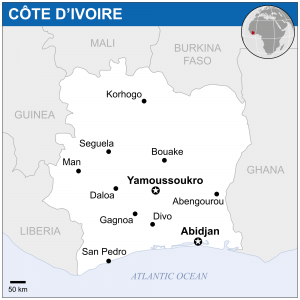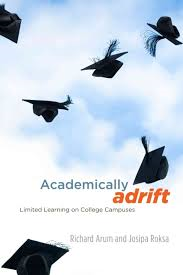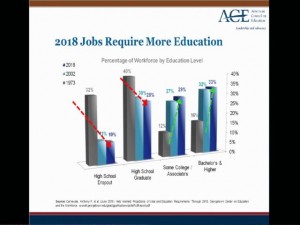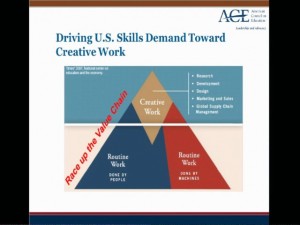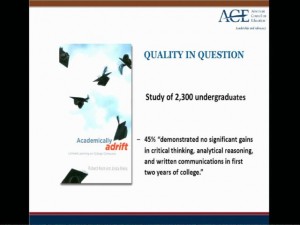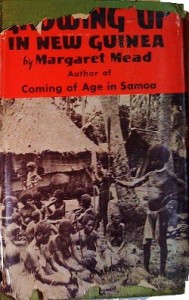Invited presentation to first-year Honors College students at UNC Charlotte, 21 November 2022
“The seasons are the way the earth’s orbit translates the sun.”
Timothy Morton, Hyperobjects, p. 80
Talking about the Solstice gives us the chance to think about time as a natural feature of the world and how humans try to organize our experience of it using clocks and calendars. Both of these technologies can help us measure and record and think about time. But in their historical origins clocks and calendars were always intended by different kinds of social and political elites to regulate our labor, to shape our experience, and to construct systems of propaganda that linked their own power to that of cosmic processes. In the ancient world kings and their dynasties reset the calendar when they overthrew their rivals so that their subjects all lived in a period created and defined by their reign. We still mark time in this way, recalling events that happened during the Hoover administration or the Obama administration, for example.
Clocks and calendars are strangely ambiguous and troublesome things. They present us simultaneously with two different senses of how time works. In one sense we record time’s progress as a single line moving forward. Hours build to days and days build into weeks and months, months into years, and so on, the numbers always increasing as year succeeds year, each year marked as unique and different from the one before.
But our other sense of movement through clocks and calendars makes time appear as an endless repetition of cycles. In our own experience we divide the year into a cycle of seasons based on temperature or precipitation or the position of the sun; by the greening of trees in spring and the turning of color in fall. Calendars are one way of recording and memorializing these seasons. They provide a formal conceptual technology that presents itself as a model or a representation of the way the real cycles of nature work.
Calendars also provide us with other kinds of reminders. Today is the 21st of November. On this day in the year 1620 English settlers at Plymouth Massachusetts signed the Mayflower Compact, the first written political constitution in North America, establishing their colony “for the Glory of God, and Advancement of the Christian Faith, and the Honour of our King and Country.” On this day in 1789 North Carolina ratified the Constitution and became the twelfth U.S. state. On this day in 1905 Albert Einstein published his famous paper on the equivalence of energy and matter. On this day in 1944 Harold Ramis, the writer and director of the original Ghostbusters film, was born. Each of these events can come back to us year by year, and strike us again that it was on THIS DAY that something significant happened, even though “this day” perpetually is and is not the same. Even so, this is a day on which we might imagine we should remember something, relive something, celebrate something, renounce something, or avenge something.
But we don’t just have one calendar. We have many of them, and they stack on top of one another in sloppy and sometimes inconvenient ways. So-called “calendar years” begin in January and end in December (this wasn’t always the case; in ancient Mesopotamia and in ancient Rome before 45 BCE the year began in March). Calendar years are different from academic years, which begin in August or September and end in May or June. Then there are fiscal years which at UNC Charlotte begin in July and end in June, ordering our organizational budgets, which are different from liturgical years defined by religious traditions, ritual cycles, and holidays. We celebrate the birthdays of famous leaders but then sometimes move them for our convenience to Mondays so as to make something called “a long weekend”. Sometimes reliving holidays means choosing a calendar day and sticking with it, as with Christmas or the 4th of July. Sometimes we define them by lunar rather than solar cycles, as with Ramadan, which moves backward through the year so in every eleven year cycle the holy month of fasting for Muslims travels from spring through winter and fall and summer, then back to spring again. Some reckon holidays by interactions between lunar and solar calendars, as with Jewish holidays or Easter; sometimes we define them by relative position, as with Thanksgiving, always the fourth Thursday of November. No matter how these schedules work we’re always frustrated that days of the month and days of the week never seem to coincide the way we’d like them to.
I think I was expected, this evening, to tell some traditional stories about the solstice, about the movement of the sun along the horizon as it rises and sets each day further to the south as we move toward the 21st of December. That’s the time of year when the daytime is shortest and the nighttime is longest because of the odd tilt of the earth’s axis. At that point of its furthest travel, the sun appears to pause for several days—“solstice” means “the sun stands still”–before seeming to move in the other direction, rising and setting each day further north and climbing ever higher into the sky as Spring approaches.
There are plenty of those kinds of stories, of course. In southern European traditions the year’s progress has sometimes been imagined by the Greek story of Persephone. Persephone, the daughter of Zeus and Demeter, goddess of the harvest, was abducted by Hades and taken to be queen of the underworld. Her mother, in despair at her disappearance, neglected the earth and refused to let any living thing grow in her absence, causing the people to starve. Eventually the gods agree to allow Persephone to spend only part of the year in the underworld, during which time the world plunges into winter’s darkness and cold, waiting to be reborn each Spring as Persephone returns to the world of the living and her mother rejoices. This story is often framed either as an ancient explanation for the seasons or as an allegory of cycles of death and renewal. Many ancient cultures had celebrations and festivals around this time. This includes, of course, the Christian Church, which celebrates the birth not of the sun, but of the sun’s creator, the Christian man-god who brings a new promise of life to the world. The ancient Christian church, of course, very intentionally established its commemoration of Christ’s birth at the time of the Winter Solstice in order to alter the meaning of popular pagan festivals that took place around that time. The calendar used in ancient Rome placed the winter solstice on December 25th.
But I’d like to go back to the idea of the ambiguity of the clock and the calendar, and to think about the ways our own culture organizes our experience and shapes our thoughts about time.
I find it fascinating that the way we experience the world is often so different from the way we are trained to understand it. Our own experience of the cycle of days is largely identical to that of our ancient ancestors. Simple observation tells us that the sun appears on the horizon in the morning, rises through the sky and then dips below the edge of the world in the evening. This is a universal observation and an undeniable empirical fact. Unless you live in the Arctic Circle. School, however, tells us that our untrained observation is an optical illusion and that our most fundamental everyday experience of the world provides us with false knowledge. The sun doesn’t move across the sky at all. Instead, we’re the ones moving toward and then away from the sun as the ground beneath our feet rotates on an invisible axis and bears us all along, providing us each day and each night with a panoramic tour of the sky.
We reckon time in terms of such motion. Days are defined by the rotation of the earth and years by orbits around the sun. We divide our days into 24 segments called hours—a convenient but completely arbitrary number; we could just as well have chosen ten segments or twelve segments or 19 or 36 segments. Or just two, day and night. We’re instructed, again contrary to experience, that morning begins at midnight, hours before the sun appears. We arbitrarily divide our hours into sixty minutes, and each minute into sixty seconds, giving us 86,400 tiny time units each day. That’s the story our clocks and watches and phones tell us. We can keep dividing those units down and down into milliseconds and nanoseconds and picoseconds, of course, divisions that are an important part of making those digital time machines work.
But a funny thing happens as soon as we do this. We’ve taken an arbitrary cultural unit and made it appear to be a natural unit of measurement, somehow inherent in the structure of the universe. It’s not, of course. A second is a convention, as are minutes and hours and, for that matter, days, since the actual time it takes the earth to complete one rotation varies subtly day by day, and over the course of decades and centuries it slows down and speeds up. Day by day the length of earth’s rotation is affected by the tidal forces of the sun and moon; by interactions between the earth’s core and mantle, by weather patterns, the formation and melting of glacial ice, and fluctuations in its magnetic field. The length of a second is an average, a mathematical fudging of a cultural convention.
The more accurately we can measure these things the more problematic it is to find natural analogues to anchor our artificial units and make them appear to be real elements of nature. The need for predictability and precision has resulted in the search for ever-more accurate standards for defining arbitrary units of time such as the second. Once defined as 1/86,400th of a day, that proved too inaccurate because of those variations in the earth’s rotation. So to achieve perfect standardization the length of a second is currently defined by international scientific standards as equivalent to 9,192,631,770 periods of radiation fluctuation between the two basic ground states of an atom of Cesium-133.
This precise kind of measurement overlays the messy actual cycles of nature as inexactly as fiscal years and calendar years and academic years and ritual years overlay each other; as inexactly as weeks overlay months and as inexactly as days map onto years. They never quite match exactly and need additional calculations and adjustments to make them fit into each other. It’s the same kind of artificial grid as any of those human calendars. This is not to deny the importance or utility of measurement. It’s merely to state a fact, and to remember that the different ways we have of calculating time, or of creating cultural meanings through the idiom of time—are each valuable and legitimate undertakings in their own way.
Mathematics and astronomy are ways of making meaning, and myth is a way of making meaning, and gathering together in the archway of the Levine Building is a way of making meaning, each different and each appropriate for a purpose.
When we experience the darkness of winter, the days shrinking and ending so soon, the weariness of the end of the semester weighing down on us, always feeling like it’s later than it has any right to be; that time itself is contracting, it’s hard to sense this deprivation in terms of astronomical processes. It’s hard to experience the fading of the light as simply an effect of the earth’s tilted axis bringing each hemisphere closer or further from the light at different points in its orbit. It’s hard to take seriously our cultural convention that there are still 24 equal hours in each day, because in our actual experience of time the early fading of winter light is so much more significant than the arbitrary conceptual grid lines we’ve laid over each day. And it’s hard to remember that the encroaching winter we’re experiencing here is being experienced—right now–as the height of summer and the middle of the day by people in Australia.
What we feel in our guts is that something real—light, time, comfort, certainty, even hope—is being taken away from us.
And so we come together to bring the light and the warmth back with our candles and our cocoa and remind each other that Persephone re-emerges from the underworld each year, every year, despite the calendar’s assurance that each new year is a unique unit, progressively different from the last. Her return to the world will once again awaken her mother’s joy, forcing the daffodils into bloom and the buds on the trees into new leaf. The light will eventually return to us if we hang on long enough and support one another through the dark times.
